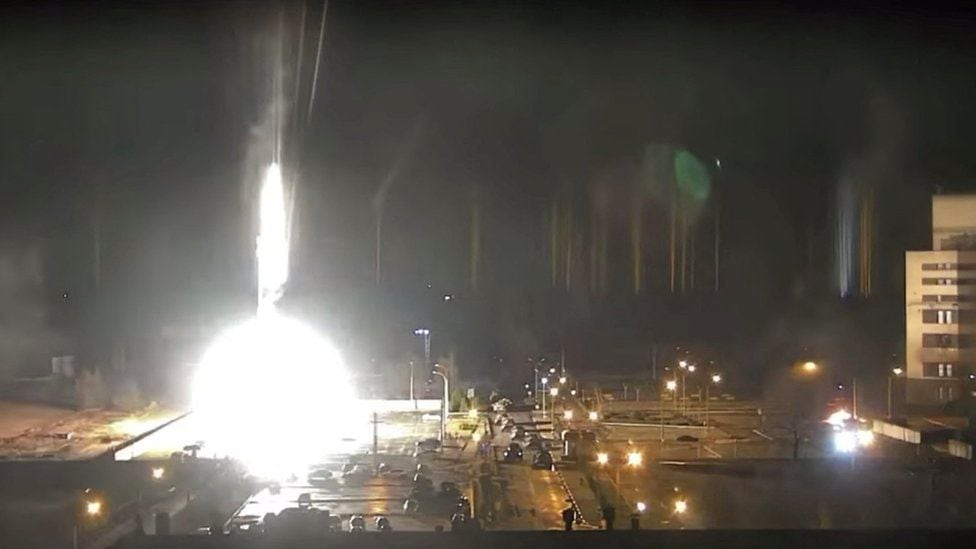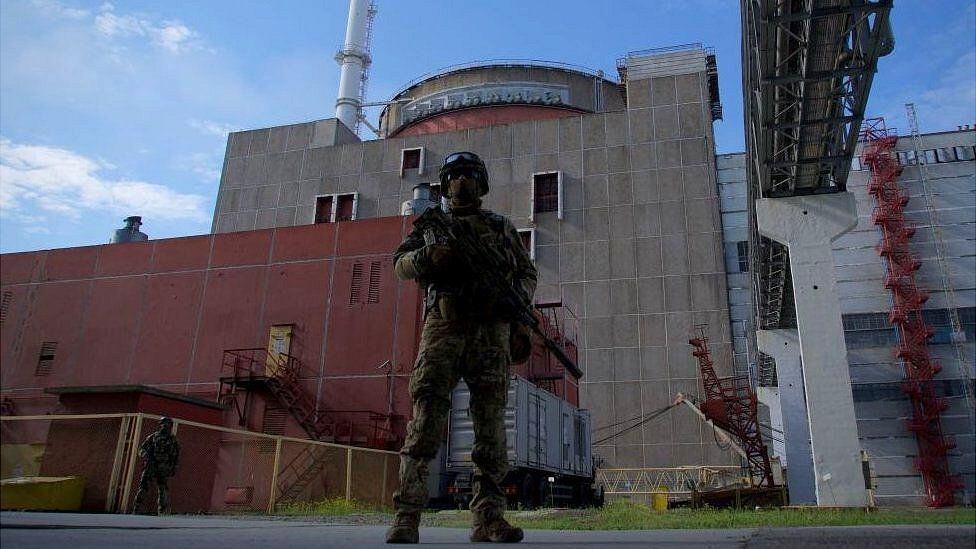The persistence of the bombardments of the energy facilities of Ukraine alarm has risen over the already fragile state of nuclear security. Fears are now focused on temporary blackouts that have led to the disconnection of the country’s nuclear power plants at different times, something that, according to experts, increases the vulnerability of those plants.
LOOK: Ukraine under attack: millions still without electricity or water after massive Russian bombardments
On Wednesday the 23rd, a massive Russian missile attack against the Ukrainian energy infrastructure forced the disconnection of the Russian-controlled Zaporizhia nuclear power plant and put it under “cold regime”. On the same day, a blackout caused the shutdown of the reactors at the Pivdennoukrainsk nuclear power plant, in southern Ukraine, and those of Khmelnitskyi and Rivne, in the west, which had to activate emergency shutdowns.
Speaking about the situation at the Zaporizhia power plant, the largest in Europe, Rosatom President Alexei Likhachov explained that under the cold regime the plant can be kept in a relatively safe state, but that it is a vulnerable measure. , especially in cases of direct fire against the facility. “Any loss of power to the Zaporizhia station implies an increase in its vulnerability, a reduction in its security”he claimed.
“Taking into account the intensification of direct attacks on the territory of the nuclear power plant by the Ukrainian Army, which caused damage to important facilities of the power plant, the understanding of the need to make a decision on the security zone rather quickly is growing. ”he pointed.
Carlos Umaña, member of the International Campaign to Abolish Nuclear weapons (ICAN) and the International Association of Physicians for the Prevention of Nuclear War, points out that the situation is “quite worrying” because several bombs have fallen inside the nuclear reactor complex, very close to the danger zone, which is where there are the nuclear fuels, the cooling pools, the spent fuel.
The other problem is related to electricity, since nuclear reactors need an external electrical supply. “When this fails, their emergency diesel generators are used, with which they can last a few days, and when those fail they have emergency generators that run on batteries”he tells El Comercio.
With the bombing of the electrical network, it has become necessary to use emergency diesel generators. In addition, the attacks that occurred inside the facilities have caused some power lines that lead from the diesel generators to the other reactor systems to be affected.
The serious risks
According to the Reuters agency, the latest discharge of Russian missiles killed 10 people and knocked out all of Ukraine’s nuclear power plants for the first time in 40 years.
To understand what the experts mean when they talk about disconnecting a nuclear plant, it is key to emphasize that nuclear power plants as such cannot be 100% disconnected and it is always necessary for someone to control what happens.
“When we talk about disconnecting them, we mean disconnecting them as a source of energy and generating the necessary reactions to run the turbines”Umaña points out.

He explains that nuclear reactors work practically the same as a fossil fuel generator because what is produced is a type of explosion that generates kinetic energy that makes the turbines move, only in this case the explosion is nuclear. So, a disconnection implies that this reaction stops, that is, the turbines stop moving.
However, it will require a lot of energy and a lot of water to keep the fuel that has been used cool and the cooling systems running. If this does not happen, what would happen is that the radioactive material would evaporate and spread first locally and then regionally.
“What is affected immediately is the electricity supply of the population. A large part of the electrical grid is provided by the Zaporizhia nuclear reactor system. Rather, the shutdown, no more nuclear explosions, is an effort to try to lessen vulnerability by lessening the need for cooling systems, less fuel spent to try to reduce the impact in the event of a catastrophe.”says Umana.
Viable solution?
With a view to guaranteeing nuclear safety, the International Atomic Energy Agency (IAEA) has been calling for months to create a protection zone around the plants due to the frequent bombardments.

For Umaña it is vital that a demilitarized zone be created around the nuclear reactors. “It is the first time that there are nuclear reactors in a war zone. It is extremely important that all nuclear reactors from now on are in a zone considered demilitarized, that is essential, ”he stresses. He also considers it important that this is not controlled by Russian personnel, but by the relevant authorities and that Zaporizhia is not seen as a military base.
And, in the future, he points out, the only way to prevent a catastrophe is not to depend on nuclear power for electricity supply. “It is a very high risk, it is quite expensive energy, which requires a huge investment and whose results are not seen in less than 10 or 15 years, which is how long it takes to build one of these plants. Nor is it cheaper than renewables, ”he concludes.
Source: Elcomercio
I am Jack Morton and I work in 24 News Recorder. I mostly cover world news and I have also authored 24 news recorder. I find this work highly interesting and it allows me to keep up with current events happening around the world.

:quality(75)/cloudfront-us-east-1.images.arcpublishing.com/elcomercio/GIZDAOBNGEYS2MRSKQYDAORSGI.jpg)

:quality(75)/cloudfront-us-east-1.images.arcpublishing.com/elcomercio/HJP4EIGMVJHEZDCDVKNUD2HK6E.jpg)



